Business Profile: Scott Bailey Racing Engines
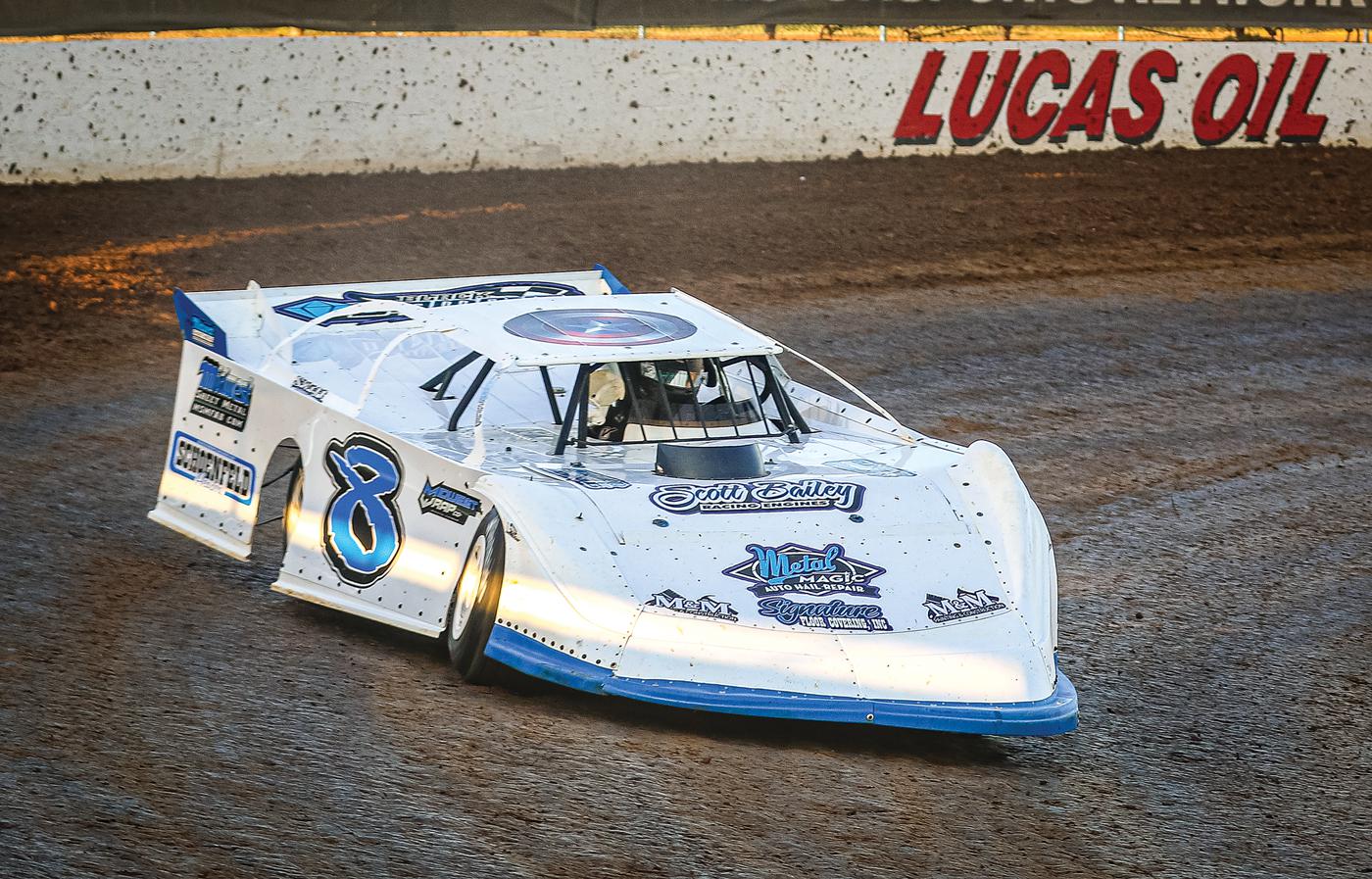
Personalized attention to customers combined with tireless R&D work have won this Midwest-based shop multiple engine builder of the year crowns, and the loyalty of dirt late model competitors that are typically treated “like family.”
Scott Bailey and Josh Poe consider the customers of Scott Bailey Racing Engines (SBRE) family. And dealing with family sometimes requires tough love.
Since the start of the COVID-19 pandemic, and continuing through the present day, Bailey and Poe are clear with their dirt late model customers that the time it takes to get a new or refreshed engine has changed because of ongoing struggles with parts availability.
“I feel like the best thing we can do to provide service to our customers is explain to them the timeframe it is going to take to get them the engine they need,” which is now a year in advance, not month to month, Poe said.
Though it’s been a period of “extreme” stress, Bailey said, no SBRE customers have gone without getting the engine they wanted, proof that the company’s small size works as a benefit.
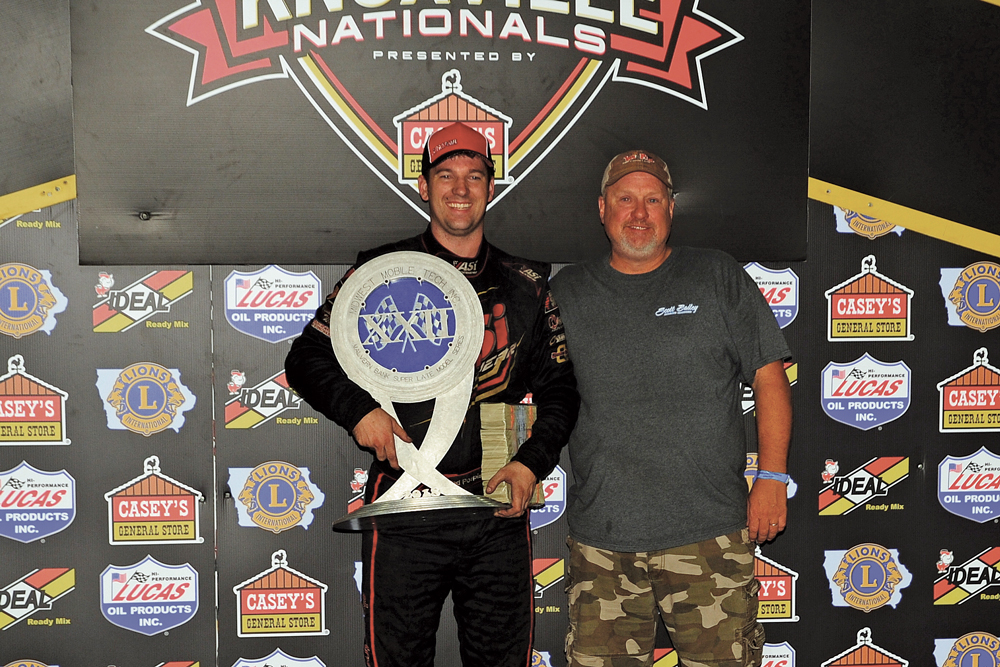
“I think it’s really important to say we’re not the biggest; we’re a very small company,” Bailey said. “But we give our customers very close attention.”
Bailey started Scott Bailey Racing Engines about 15 years ago and worked by himself until Poe came on as co-owner about seven years ago. They’re a two-man show today: Bailey spends most of his time in sales, R&D, and helping customers at the track, while Poe builds a majority of the 40 new and refreshed engines they produce per year from their 1,500-square-foot shop in Peculiar, Missouri.
Similar Backgrounds
Scott Bailey Racing Engines has victories and track championships too numerous to count, but its eight regional touring championships in series that include Midwest Late Model Racing Association (MLRA) and Malvern Bank Super Late Model Racing (SLMR) stand out, according to the co-owners.
Ninety-five percent of their work is in the dirt late model market, though they also service a few modified customers.
Bailey said he and Poe came from similar backgrounds, and both had fathers who were accomplished mechanics and body men. “We grew up helping our dads back in the 1970s and 1980s just handing them tools,” Bailey said.
Bailey did some drag racing, while Poe had more experience behind the wheel of modifieds and street stocks.
Bailey’s interest in building dirt racing engines goes back to the late 1980s, but he “got serious” about it approximately 15 years ago, when he began buying more equipment. The shop today is loaded with boring, honing, seat-and-guide and surfacing machines, a few Bridgeport mills, and a Stuska Dynamometer.
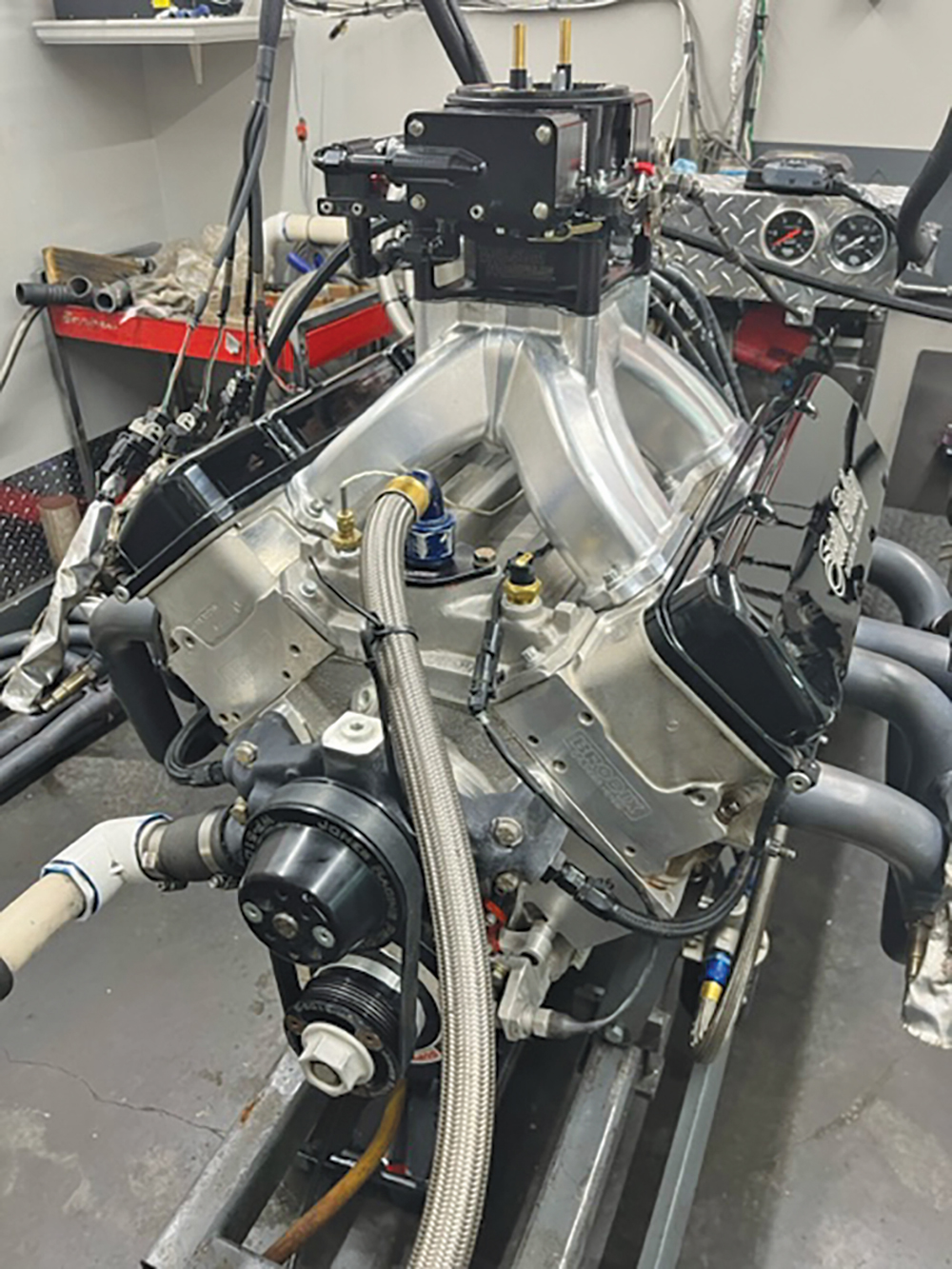
A turning point for the business was when Poe “darkened my doorway,” Bailey said, joking that he’s never allowed him to leave.
They knew of each other before then through racing circles, but one day Poe, who worked long hours in industrial machining and fabrication, went looking for a closer shop to machine his racing components and drove to SBRE, about 15 miles away.
“We just kind of started helping each other at night and on the weekends,” Poe said. Before long, “we had more work than we could deal with just one of us.”
The seven years since have been a “godsend,” Bailey said about the help from Poe. “It really grew from there. It wouldn’t be what it is without Josh.
“I think it’s both of our passion,” he added. “We complement each other very well.”
The Dirt Market
Despite the struggles with parts availability and rising costs in racing, business is humming at SBRE. “Things are very expensive, but some of our series in the Midwest are doing a good job,” Poe said, noting that SLMR has increased payouts and is enjoying strong car counts.
Shelby Cooper, a representative of the series, said the start pay has been raised by $100, to $500 for 2023, the increase made to help those in the regional racing series offset rising costs.
She noted that the SLMR Hoker Trucking East Series had an average of 33 cars for the 2022 season, and the Malvern Bank West Series had 27, each increasing by a few cars from the season prior. The series’ highest car count in 2022 was 49.
Poe pointed out that despite its pricey buy-in, dirt late model racing still receives plenty of attention. “The expense is getting pretty close to intolerable, but people are still wanting to do it,” he said.
He believes its popularity among spectators is based largely on entertainment value. “They have a product that people want to watch,” Poe stated.
More than just the thrill of fast cars, fans make a connection with the drivers, he explained, traveling up to a few hours to see top competitors from the region or even the nation.
“They can interact with their favorite drivers and teams by going right down in the pits and talking to them,” he said, “whereas obviously in other professional sports settings that is far more difficult.”
He believes the diehard race fan is gravitating away from the “NASCAR-type stuff” and finding local heroes who they know support racing in their area. As business owners get out of the driver’s seat and put younger talent into their race cars, they stay involved at the track.
“I feel that the fans have some background knowledge of who they are rooting for each week, making them look forward to the next race on the schedule,” he said.
There remains, however, a good mix of veteran drivers and young talent, Poe noted. “It’s nice to see the guy who’s expected to win have a challenge from a young rookie with maybe an underfunded team giving it everything they got,” he said, further building the fan base.
MLRA currently has an unusually high four legitimate drivers competing for rookie of the year. “Josh and I grew up working and spending that money to go race. It’s changed now; these younger kids are racing on their families’ money,” Bailey said.
With today’s costs it would be impossible for a 20-year-old driver to fund a car without family help, Poe added. “In our day, it was possible at a certain level. Now, it’s not even fathomable.”
R&D Work
For their part in helping customers thrive, SBRE has spent time in the past five years trying to make the most of the SLMR series restrictor/governor plate rule. “We’ve had a lot of success. We’ve done a lot as far as R&D work to stay ahead,” Bailey said. “I think that’s probably been our highlight.”
Time on the dyno and work specific to the intake and the governor plate rule has paid dividends for SBRE. As a result, the company has won numerous engine builder of the year awards for the series, which races at tracks across Iowa, Missouri, Nebraska, South Dakota, and parts of Kansas.
To stay ahead in that market, you first have to figure out what doesn’t work, Poe stressed. “That’s frustrating and very time consuming,” he said. “The gains are small and don’t come easily.”
The goal of the restrictor rule is to keep all the engine packages at a certain power level, even though anything from a crate engine to unlimited cubic-inch engines are permitted.
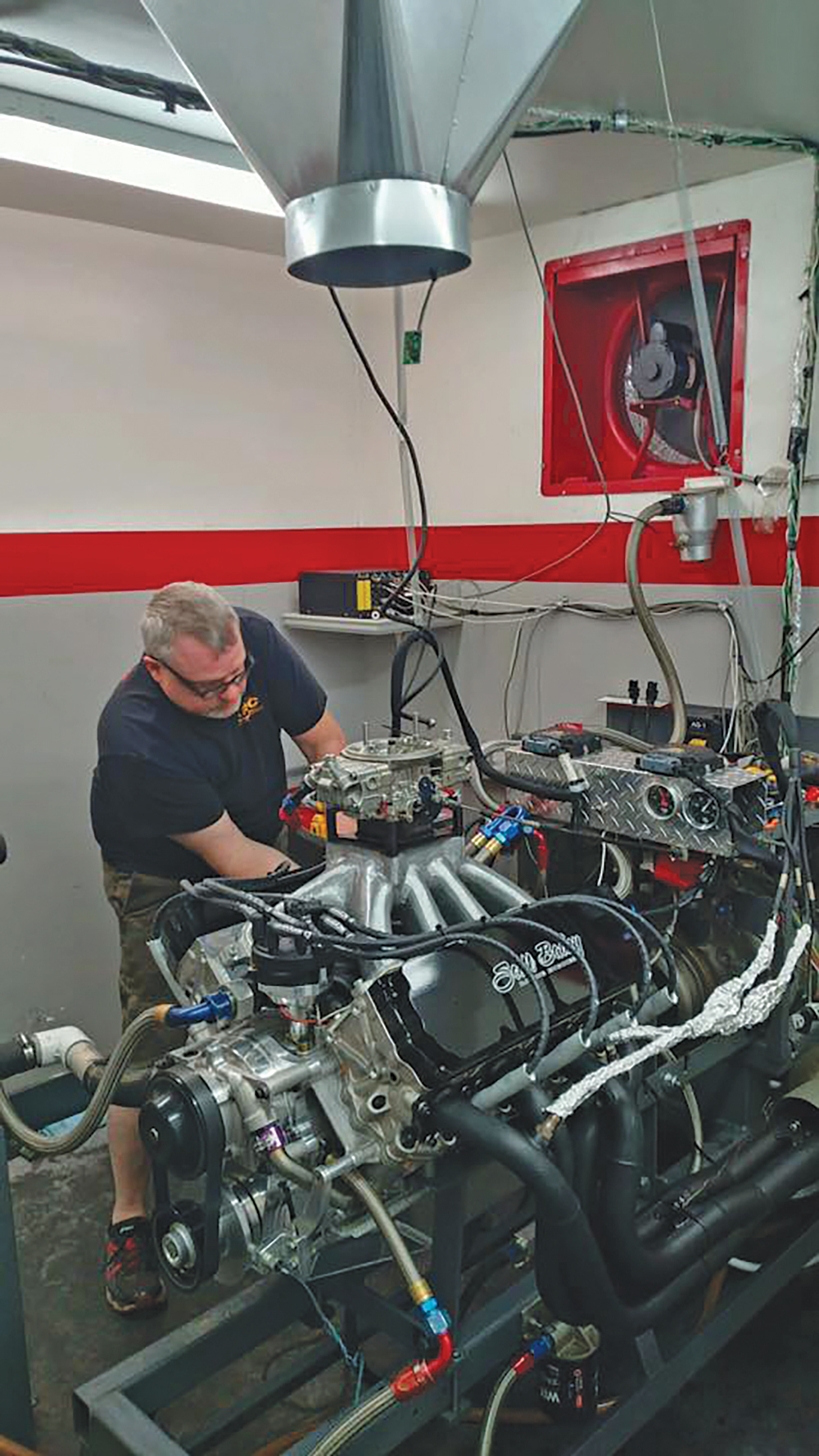
“The rules package is very fair, but our customers would come to us and have us look at those rules and say, ‘Given these rules, which engine package would you choose?’” Poe said. “Obviously we’d pick one we thought we could squeeze a little harder.”
R&D is important, but so is time spent at the track. “That’s one of the most valuable aspects of what we do,” Poe said. “I truly feel like that’s why a lot of our customers are here, because they know that Scott’s going to be at a majority of the races they’re at.”
The next new customer could be parked right beside a current customer in the pits—as was the case a few years ago, when Bailey found himself at an MLRA race at Lucas Oil Speedway, among SBRE’s local tracks about an hour away in Wheatland, Missouri, when he helped a driver get his engine back together. Since then, that team has purchased five new powerplants from SBRE.
Parts Challenges
Poe estimates SBRE could have built 30% more new engines in recent years had supplies been adequate.
Parts availability will remain a challenge throughout 2023 and likely beyond, according to Bailey and Poe. “We are still struggling with that a little bit. We used to be able to—start to finish—pick up the phone, order everything you need to build a dirt late model engine, and most of the time have it here in three weeks to a month,” Poe said. “Now the parts just aren’t readily available.”
Specifically, suppliers are having trouble getting the raw material to build crankshafts. And Brodix, as the sole supplier of aluminum blocks and cylinder heads, is “carrying the weight of the world right now,” he said.
“It’s a challenge getting things in a timely manner to meet the demands of the customer, for sure. A lot of times we have to tell them things they don’t want to hear, but that’s the reality,” Poe said.
Peter Harris at Crower Cams and Equipment Co., the San Diego, California-based manufacturer of race engine components, offers the same advice to its customers, which include SBRE.
“Plan ahead,” Harris said. “Prepare the customer to have to wait.”
He said shops like SBRE that build mostly similar engines are in a bit better position. “The only guys who get parts on a really reliable basis are those who use a lot of the same parts,” he said.
While larger shops face impossible odds in keeping customers supplied with engines, SBRE has done whatever it takes to make sure no one was out of an engine through the past three years, Poe said.
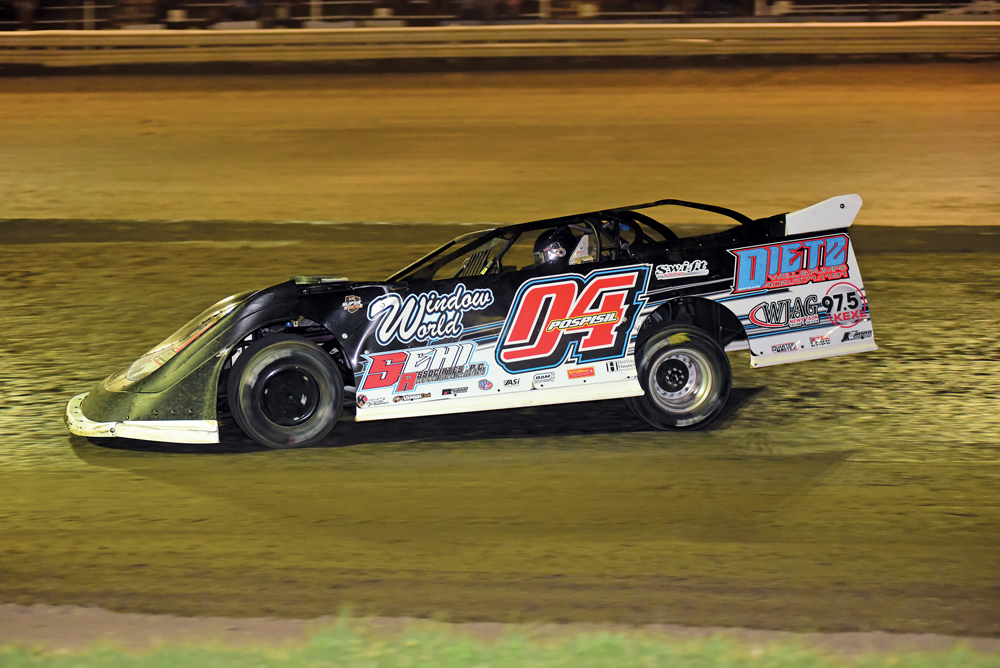
“We were able to stay in contact with our customers,” he said.
“It was an extreme amount of stress,” Bailey added.
For 2023, the lead on crankshafts remains “out there quite a ways,” Poe said, about four months when we spoke in mid-March.
“Brodix has done a good job ramping up production, blocks are becoming more readily available, and the cylinder heads are OK,” Poe said. “We’re still seeing some long lead times with custom-made rocker arms.”
For things like titanium valves, the raw materials are rare, as are the suppliers, so options are few, Poe noted. “I think things have stabilized to a certain degree. We’re not running out. During the height of the Coronavirus during the lockdown, we ran out of simple things like engine bearings and rear main seals.”
Still, “the crankshafts, the blocks, and the rocker arms are going to continue to be a problem for quite some time,” Poe added.
Bailey said piston companies have done a “real good job” getting caught up, with current lead times of eight to 12 weeks after having been considerably longer.
Harris from Crower agreed that crankshafts and rocker arms are among the parts that are most difficult to get because of the time it takes to produce them and their many varieties.
Smaller, Better
From 1 a.m. phone calls from teams traveling track to track, to putting every refreshed or new engine on the dyno before it leaves the shop, SBRE is succeeding because of its personal connections.
“We know most of our customers like family,” Poe said. “Most of the dirt late model teams have at least two engines, if not more, so we have a lot of repeat customers.”
They also know, however, that every customer is unique. “We don’t build cookie-cutter engines; we listen to our guys,” Bailey said. “We understand there are different driving styles; drivers expect and want different things out of their engines. We’re not one to say, ‘Well, so and so is winning with it like this.’”
Not that larger shops ignore their customers, it’s just impossible for them to tailor their engines and manage everyone’s needs around the clock, according to Bailey and Poe.
For SBRE, this personal connection has been vital over the past three years. Poe recalled the effort to inform customers about longer timeframes to get engines. “If we don’t get them that information, we’re leaving them vulnerable,” he said, “and they’re going to call with demands that are impossible to meet because they didn’t know the situation. This way, they have the information they need to make choices for their team.”
 MEMBERSHIP LOGIN
MEMBERSHIP LOGIN JOIN PRI
JOIN PRI


